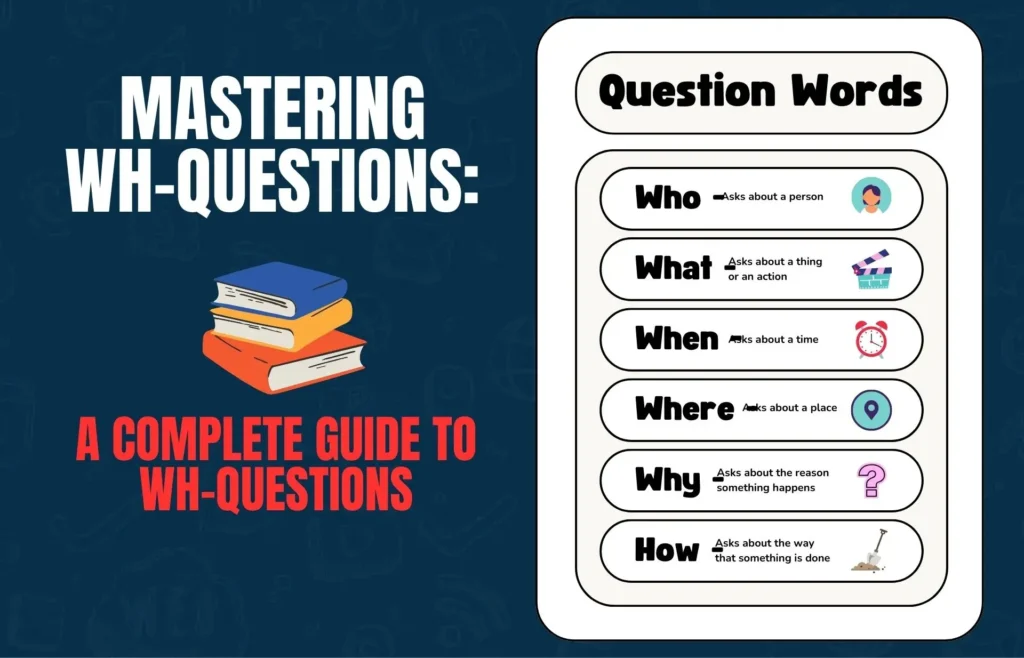Mastering Sentence Structure & How They Build Communication

Mastering sentence structure is crucial for clear and effective communication. Whether you’re writing an email, a school essay, or speaking in a conversation, how you organize your sentences greatly affects the clarity of your message. Types of sentences and the parts of a sentence are the basic building blocks that contribute to smooth communication.
This article will guide you through understanding sentence structure, including the different types of sentences, their parts, and how to use them effectively. By practicing these essential grammar concepts, you’ll avoid common mistakes and enhance your ability to communicate in English.
Understanding Sentence Structure: The Basics
Before diving into the types of sentences and parts of a sentence, let’s first understand what sentence structure is. Sentence structure refers to how different elements of a sentence, such as the subject and predicate, are organized to convey a complete thought.
There are three key elements in sentence structure:
Subject: The subject tells us who or what the sentence is about. It’s often a noun or pronoun.
Predicate: The predicate tells what the subject does or is. It typically includes a verb and sometimes an object.
Modifiers: Words that describe or add detail to the subject or predicate (e.g., adjectives, adverbs).
Types of Sentences: The Different Forms of Communication
Understanding the types of sentences is essential for clear and effective communication. There are five primary types of sentences in English:
- Declarative sentence
- interrogative sentence
- imperative sentence
- optative sentence
- Exclamatory sentence
- Declarative sentence: A declarative sentence makes a statement. It provides information or expresses a fact and ends with a period.
Examples:
1. The sun is shining.
2. She loves reading books.
3. My brother is studying medicine.
4. We are going to the movies tonight.
5. The car broke down on the highway.
6. I live in New York City.
7. Dogs are loyal animals.
8. The teacher is explaining the lesson.
9. Water boils at 100°C.
10.It’s raining outside.
- Interrogative Sentence: An interrogative sentence asks a question and ends with a question mark. It’s used to gather information, seek clarification, or inquire about something.
Examples:
1. What time is it?
2. Where are you going?
3. How did you do on the test?
4. Why are you upset?
5. Who is your favorite singer?
6. Can you help me with this problem?
7. Is this your pen?
8. Did you watch the game last night?
9. What is your name?
10.Where did you buy that dress?
- Optative Sentence: An optative sentence expresses a wish, desire, or a prayer. It often starts with phrases like “I wish” or “May.” These sentences typically end with a period.
Examples:
1. I wish I could visit Paris someday.
2. May you have a wonderful birthday!
3. I wish you good luck on your exam.
4. May all your dreams come true.
5. I hope you get better soon.
6. May this year bring you joy and success.
7. I wish I knew the answer to that question.
8. May the peace of the world last forever.
9. I wish for peace and happiness.
10.May the best team win the match!
- Imperative Sentence: An imperative sentence gives a command, request, or advice. The subject is usually implied (you), and the sentence ends with a period or sometimes an exclamation mark.
Examples:
1. Please close the door.
2. Stop talking!
3. Take out the trash.
4. Finish your homework before dinner.
5. Listen to your parents.
6. Don’t forget to call me.
7. Pass me the salt.
8. Wait for your turn.
9. Open the window, please.
10.Be quiet in the library!
- Exclamatory Sentence: An exclamatory sentence expresses strong feelings or emotions such as surprise, excitement, or anger. It ends with an exclamation mark.
Examples:
1. Wow! That was an incredible performance!
2. What a beautiful sunset!
3. I can't believe we won the game!
4. How amazing this place is!
5. That was the best day ever!
6. What a delicious meal!
7. Oh no! I forgot my keys!
8. What a surprise to see you here!
9. That's unbelievable!
10.What a great movie!
Creating Sentence Variety
To make your sentences more interesting, it’s important to vary your sentence structure. This is where simple, compound, and complex sentences come into play.
6. Simple Sentences: Contain one independent clause (a subject and predicate).
Example: “I love chocolate.”
More Examples:
- The cat sleeps.
- She runs every morning.
- He reads books before bed.
- I love chocolate.
- We live in New York.
- They are playing soccer.
- The sun rises in the east.
- Birds fly in the sky.
- It is raining today.
- My sister plays the piano.
7. Compound Sentences: Contain two independent clauses joined by a coordinating conjunction.
Example: “I love chocolate, but I’m trying to eat healthier.”
Complex Sentences: Contain one independent clause and one or more dependent clauses.
- I wanted to go to the park, but it started raining.
- She is cooking dinner, and he is cleaning the house.
- I love to read, so I visit the library every weekend.
- He wanted a coffee, but they were out of stock.
- The movie was interesting, yet it was too long.
- I have a meeting at 3 PM, and I need to prepare for it.
- The weather was hot, so we went swimming.
- She studied hard for the test, but she still didn’t pass.
- He was tired, yet he continued to work.
- They wanted to stay home, but they decided to go out.
8. Complex Sentences: These sentences contain one independent clause and one or more dependent clauses.
Example: “Although it was raining, we went to the beach.”
- Although it was raining, we decided to go for a walk.
- I missed the bus because I woke up late.
- After she finished her homework, she went to the gym.
- Because he was hungry, he made a sandwich.
- If you study hard, you will pass the exam.
- While I was watching TV, my phone rang.
- Since it’s a holiday, the office is closed.
- If you want to succeed, you need to work hard.
- When I get home, I will call you.
- Although he is young, he plays the piano very well.
Parts of a Sentence: Dissecting the Core Components
Every sentence is made up of several parts of a sentence, which work together to form a complete thought. Understanding these parts is essential for building proper sentence structure.
- Subject
The subject tells us who or what the sentence is about. It’s usually a noun (person, place, or thing) or pronoun (he, she, they).
Examples:
The cat is sleeping.
John loves to play soccer.
She went to the store.
My friends are visiting me this weekend.
The dog barked loudly.
- Predicate
The predicate is the part of the sentence that tells us what the subject does or is. It includes the verb and sometimes other components like objects or complements.
Examples:
The cat is sleeping.
John loves to play soccer.
She went to the store.
My friends are visiting me this weekend.
The dog barked loudly.
- Modifiers
Modifiers are words that describe or add detail to the subject or predicate. These can be adjectives, adverbs, or phrases.
Examples:
The small cat is sleeping.
John eagerly loves to play soccer.
She went to the nearby store.
My close friends are visiting me this weekend.
The dog barked loudly at the stranger.
- Objects and Complements
An object is the noun or pronoun that receives the action of the verb. Complements add more information about the subject or object.
Examples:
She gave me a gift. (Object: me)
He called his friend. (Object: friend)
The teacher made the students happy. (Complement: happy)
We found the keys. (Object: keys)
They called her the best singer. (Complement: best singer)
Sentence Fragments: Incomplete thoughts. Example: “While I was walking.” (Fix: “While I was walking, I saw a bird.”)
Run-On Sentences: Two independent clauses joined incorrectly. Example: “I love chocolate I eat it every day.” (Fix: “I love chocolate, and I eat it every day.”)
Misplaced Modifiers: Modifiers placed incorrectly. Example: “I almost drove the car for two hours.” (Fix: “I drove the car for almost two hours.”)
Understanding and mastering sentence structure will improve your communication skills significantly. By recognizing and practicing different types of sentences, understanding the parts of a sentence, and avoiding common mistakes, you can ensure that your sentences are clear, concise, and easy to understand. Keep practicing, and soon you’ll feel more confident communicating in English!



